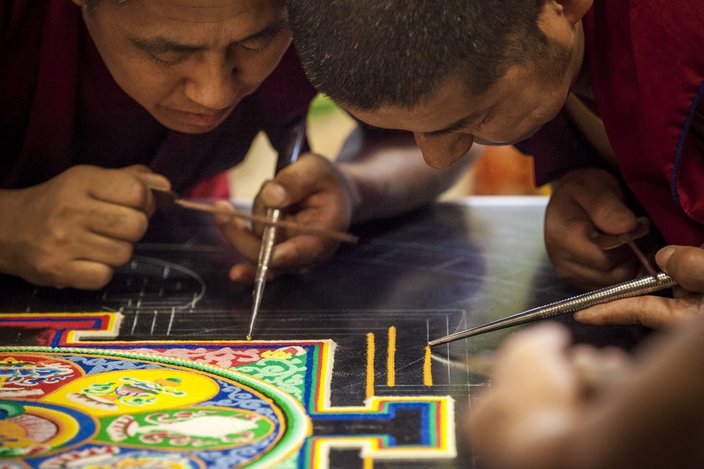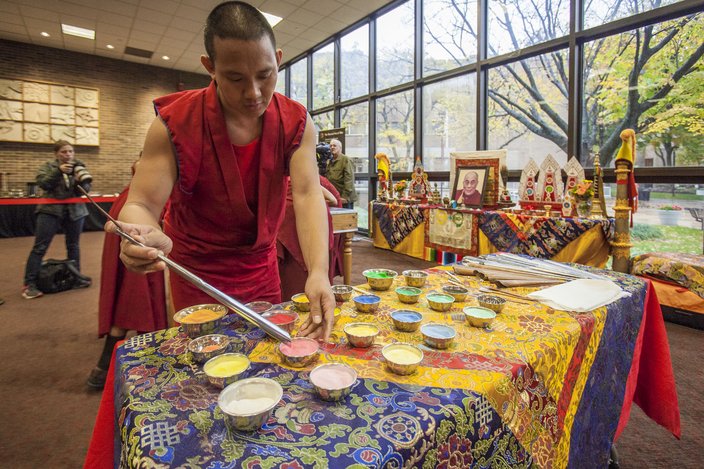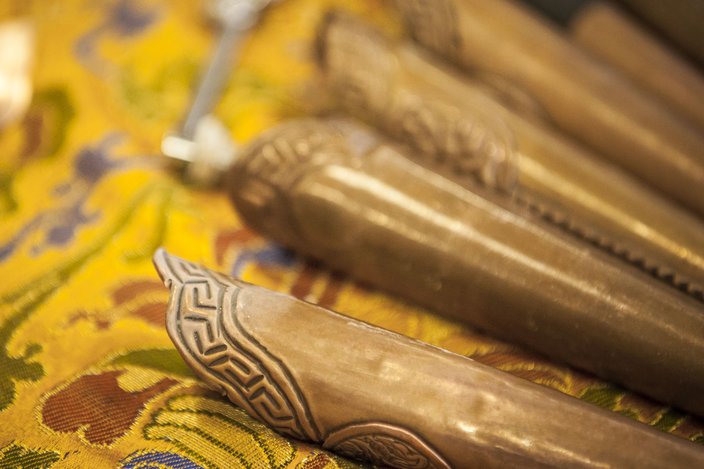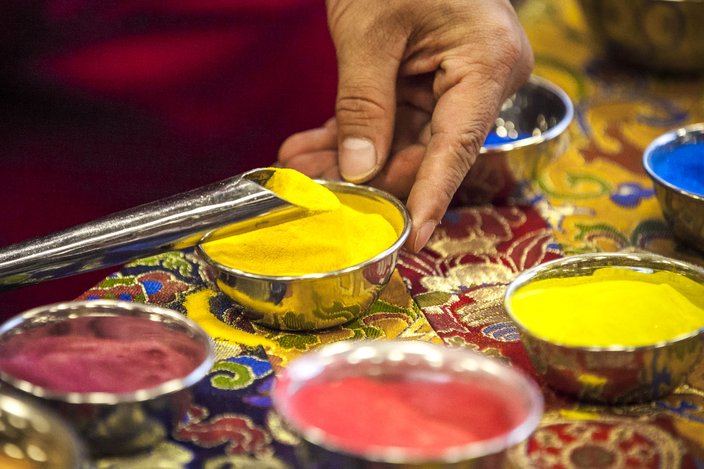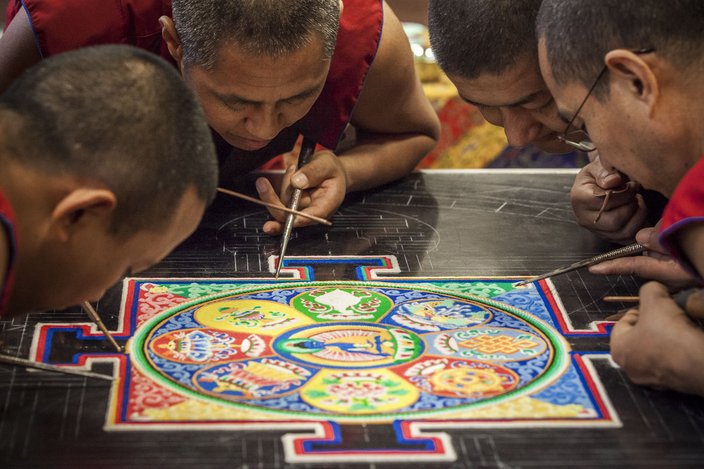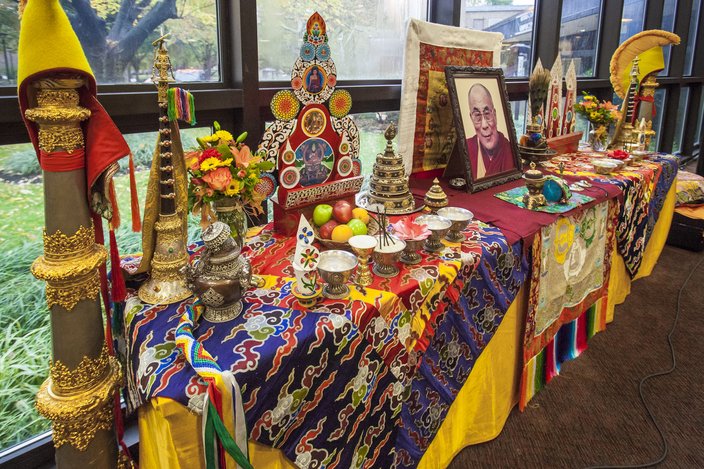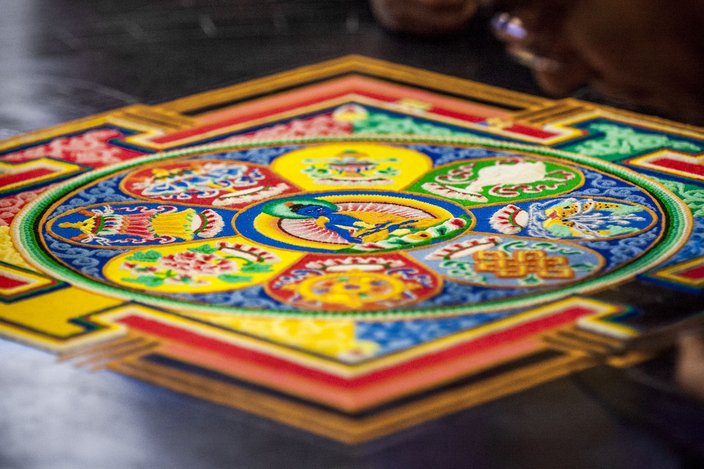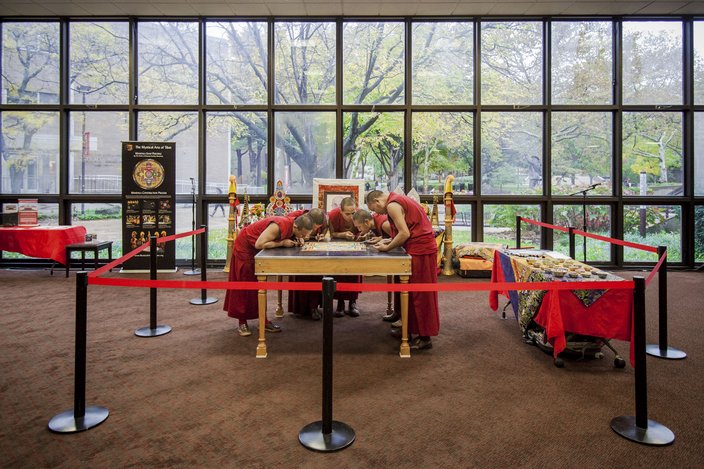With the endorsement of the Dalai Lama and Richard Gere (an advocate for human rights in Tibet), along with direct guidance from the Drepung Loseling Monastery in India, monks from the Drepung Loseling Monastery in Atlanta have been on a world tour. Their traveling mission is to contribute to world peace and healing through art, to raise awareness of the endangered Tibetan civilization and to raise support for Tibetan refugees in India.
The monks took up residency at the Campus Center of Rutgers University-Camden this week to present "The Mystical Arts of Tibet," a series of events including a sacred dance and the creation of a mandala sand painting. Mandalas have many purposes, but they are usually created for the healing of living beings and the environment. As with the sand painting tradition as a whole, mandalas have their roots in the Tantric legacy of Buddhist India, extending back over 2,500 years.
The monks began creating their mandala sand painting Tuesday at Rutgers University-Camden.
Construction of the mandala begins with the drawing of the design on the base, or tekpu. The artists measure and draw precise geometric lines using a straight-edged ruler, a compass and white pencil. Once this three-hour process is finished, the monks begin from the center and work outward, carefully adding sand to the painting.
In creating the mandala, the monks fill a traditional metal funnel called a chak-pur, which they use to meticulously pour millions of grains of sand in place over several days during the painting's construction.
Chak-purs usually range from 12-18 inches in length. Usually, they also have small ridges along their sides, and the monks will slide a piece of wood or metal over them to create vibrations that dispense the sand.The monks work in almost complete silence, except for the cricket-like sounds of metal sticks rubbing along the chak-pur.
The sand used to create a sand mandala was traditionally made of crushed, colored stone. Today, white sand is finely ground and dyed with an opaque ink.
At most points during Wednesday's construction, five monks worked on the painting simultaneously, sometimes huddled close enough together that their heads touched.
A photo of the Dalai Lama stood by as the monks worked, placed in the center of the altar created at the Campus Center of Rutgers University-Camden.The sand painting is slow work, taking days to complete.
A Tibetan altar was placed at the Campus Center of Rutgers University-Camden, just beside where the monks created their artwork.There are hundreds of mandalas that exist in the Tibetan tradition. The monks are creating the
mandala for peace and conflict resolution (Akshobhya), shown here as of 11:45 a.m. on Wednesday, Oct. 28, 2015, at Rutgers University-Camden.The monks will continue to work on the mandala until the closing ceremony at 12:15 p.m. on Friday, Oct. 30, when the mandala is consecrated and then wiped clean, representing the impermanent nature of life. A portion of the sand will be distributed to visitors at the ceremony, and the remaining sand will be poured into the Delaware River in an effort to spread its healing energies across the globe.
All photos by Thom Carroll.

 Thom Carroll/PhillyVoice
Thom Carroll/PhillyVoice
